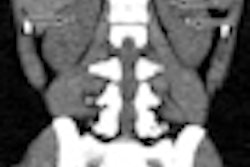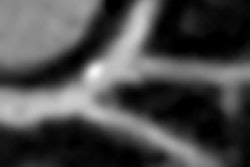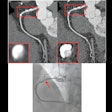Dear CT Insider,
Using the right CT protocol for acute stroke imaging can minimize lost time and wasted radiation dose while delivering the key information needed for treatment. With this in mind, researchers from Massachusetts General Hospital have found that for all its benefits, CT perfusion imaging isn't needed when deciding whether to revascularize for ischemic stroke in the middle cerebral artery.
In a talk that could help radiologists right-size their stroke imaging protocols, Dr. Michael Lev said that diffusion-weighted MRI isn't necessary for establishing the infarct size, either. Find out why from the stroke imaging expert in our Insider Exclusive, which is available to you before our other AuntMinnie.com members.
Speaking of efficient dose management, tracking radiation exposure may get a lot easier with the rollout of a new Web-based, cloud-savvy dose-tracking system that aims to bring global dose metrics to the masses. By using a cloud-based analytics platform that tracks radiation dose without the need for software or RIS/PACS integration, the developers hope to eliminate the technical barriers to dose-tracking implementation. Get the rest of the story from AuntMinnie.com senior editor Erik L. Ridley by clicking here.
Also in the dose department, the first pediatric dose survey from Thailand found mostly acceptable dose levels in three of the nation's university hospitals. The statistics compared favorably to European data, but some of those are in serious need of updating, the authors noted. For more on radiation dose exposure in Thailand, click here.
In CT of the urinary tract, Rhode Island researchers saw more incidental findings than they were hoping for in MDCT urography scans. Pushing dose down in this anatomic region as well, a Boston team achieved very low doses for urinary stone disease using iterative reconstruction.
Meanwhile, cardiac CT saw a couple of strong papers: One is from an international team presenting the first large-scale perfusion CT angiography study performed on a 320-detector-row scanner. Acquiring a second perfusion CT scan at very low doses showed whether or not a blocked coronary artery was causing ischemia and, if so, which one. Learn about Johns Hopkins University's CORE 320 study results by clicking here.
A second path to whole-heart assessment comes from Dr. James Min and colleagues at several centers worldwide. His group used fractional flow reserve calculations to determine the significance of coronary artery lesions acquired at CT angiography, avoiding the need for a second test and often the need for invasive angiography.
In lung cancer screening, researchers writing in the Annals of Internal Medicine set out to improve the selection of participants in lung cancer screening trials. The Liverpool Lung Project risk model, a kind of Framingham risk score for lung cancer, aimed to improve upon the current practice of screening all comers with a long smoking history by using clinical information to find those who were likeliest to develop the disease. And it worked: Use of the model boosted the likelihood of a positive scan, in results you'll find here.
In advanced imaging with CT, computer-aided detection reduced interreader variability in lung cancer screening, and a new algorithm improved the diagnosis of coronary artery disease by choosing the best image data for analysis.
This being the bountiful CT Digital Community, there's plenty more for your clicking pleasure. We invite you to scroll through the links below for the rest of the news about radiology's all-purpose modality.



















